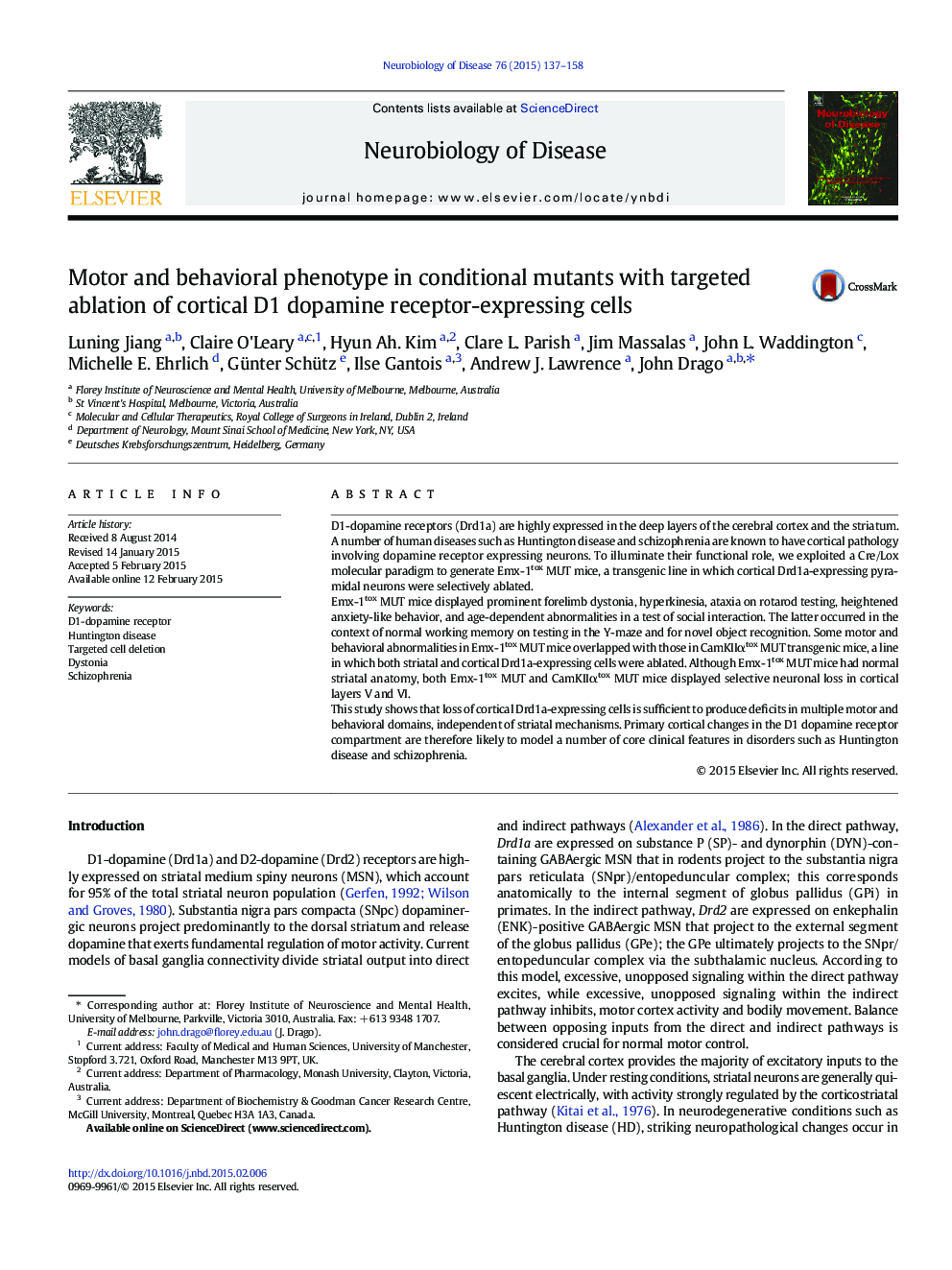| کد مقاله | کد نشریه | سال انتشار | مقاله انگلیسی | نسخه تمام متن |
|---|---|---|---|---|
| 6021739 | 1580647 | 2015 | 22 صفحه PDF | دانلود رایگان |

• D1-cortical cell ablation produces dystonia, ataxia, hyperactivity and anxiety.
• D1-cortical cell ablation impairs social interaction but not working memory.
• D1 cortical cell ablation models many aspects of the Huntington disease phenotype.
• D1 cortical cell loss may be involved in the pathobiology of Huntington disease.
D1-dopamine receptors (Drd1a) are highly expressed in the deep layers of the cerebral cortex and the striatum. A number of human diseases such as Huntington disease and schizophrenia are known to have cortical pathology involving dopamine receptor expressing neurons. To illuminate their functional role, we exploited a Cre/Lox molecular paradigm to generate Emx-1tox MUT mice, a transgenic line in which cortical Drd1a-expressing pyramidal neurons were selectively ablated.Emx-1tox MUT mice displayed prominent forelimb dystonia, hyperkinesia, ataxia on rotarod testing, heightened anxiety-like behavior, and age-dependent abnormalities in a test of social interaction. The latter occurred in the context of normal working memory on testing in the Y-maze and for novel object recognition. Some motor and behavioral abnormalities in Emx-1tox MUT mice overlapped with those in CamKIIαtox MUT transgenic mice, a line in which both striatal and cortical Drd1a-expressing cells were ablated. Although Emx-1tox MUT mice had normal striatal anatomy, both Emx-1tox MUT and CamKIIαtox MUT mice displayed selective neuronal loss in cortical layers V and VI.This study shows that loss of cortical Drd1a-expressing cells is sufficient to produce deficits in multiple motor and behavioral domains, independent of striatal mechanisms. Primary cortical changes in the D1 dopamine receptor compartment are therefore likely to model a number of core clinical features in disorders such as Huntington disease and schizophrenia.
Journal: Neurobiology of Disease - Volume 76, April 2015, Pages 137–158